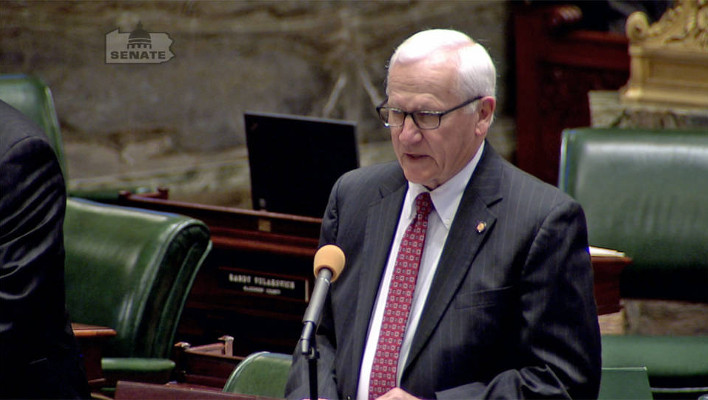HARRISBURG – Changing the definition of Metropolitan Statistical Areas (MSAs) can have important financial implications for many Pennsylvania municipalities in terms of federal reimbursements for health care, funding for housing, and investments in transportation. Those are just a few of the important implications that were discussed on Wednesday during a virtual public hearing held by the Center for Rural Pennsylvania Board of Directors, chaired by Sen. Gene Yaw (R-23), on redefining MSAs.
“The proposed changes to defining MSAs by the federal Office of Management and Budget (OMB) has the potential to impact 10 counties in Pennsylvania,” said Sen. Yaw, “and the change may have potentially significant impacts for rural Pennsylvania.”
According to Anthony Pipa, senior fellow of Global Economy and Development at Brookings, while OMB clearly says that the MSA standards are to be used for statistical purposes only, and that “nonmetro” is not meant to define “rural,” there are many federal programs and policies that rely on the definition when determining funding, and financial incentives. And Pennsylvania would have the most people impacted of any state, with almost 1.2 million people living in counties that would be reclassified from metro to nonmetro.
“Federal programs often use the MSA standards to set eligibility requirements, allocation formulas, scoring criteria, and several other dimensions of program administration,” Mr. Pipa said. “It’s important to recognize and emphasize that the impact of the proposed change on these programs has not been fully analyzed, nor is it well-understood. Previous federal attempts to evaluate the implications of changes to the MSA for program administration are woefully incomplete.”
Ronald Grutza, senior director of Regulatory Affairs and assistant director of Government Affairs with the Pennsylvania State Association of Boroughs, said one funding implication is the Community Development Block Grant. “We are concerned that some boroughs may lose this direct funding because of OMB’s change,” he said, adding that the change could have a ripple effect in communities, especially among lower income populations.
Kim E. Wheeler, executive director of SEDA-Council of Governments, said the redefinition may affect the status of Metropolitan Planning Organizations (MPOs) and result in a redesignation to Rural Planning Organizations (RPOs). “The SEDA-COG MPO and eight other MPOs in the Commonwealth stand to lose engagement and investment in the Pennsylvania Department of Transportation planning and programming process as well as the critical funding that supports that process.”
According to the Hospital and Healthsystem Association of Pennsylvania (HAP), preliminary analysis shows that there could be 24 Pennsylvania hospitals impacted by the definition change, of which 17 could see a negative impact. The total Pennsylvania impact is estimated to be an annual loss of $43 million in Medicare reimbursement to hospitals. (Based on hospitals in core-based statistical areas that have a population between 49,999 and 99,999, and are currently flagged to go from urban to rural if OMB changes the definition – using the 2010 census).
“It’s clear that OMB needs to put the break on this definition change, as it has the potential to have a significant impact on rural Pennsylvania,” Sen. Yaw said. “To implement these changes now, without first considering all of the potential ramifications, would be shortsighted.”
For more information on Wednesday’s hearing, visit https://www.rural.palegislature.us/publications_redefining_metropolitan_areas.html.
The Center for Rural Pennsylvania is a bipartisan, bicameral legislative agency that serves as a resource for rural policy within the Pennsylvania General Assembly. The Center works with the legislature, educators, state and federal executive branch agencies, and national, statewide, regional, and local organizations to maximize resources and strategies that can better serve Pennsylvania’s nearly 3.4 million rural residents.


